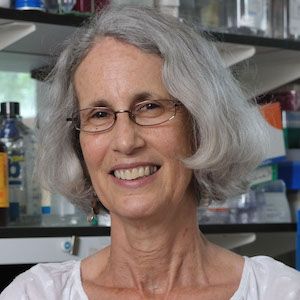RGN-259 Demonstrates Rapid Healing of Epithelial Defects in Neurotrophic Keratopathy
Complete healing occurred after 4 weeks in 6 of the 10 RGN-259-treated subjects and in 1 of the 8 placebo-treated subjects.
Hynda K. Kleinman, PhD

The efficacy and safety of 0.1% RGN-259 ophthalmic solution in promoting the healing of persistent epithelial defects for patients with stage 2 and stage 3 neurotrophic keratopathy (NK) was evaluated in a phase 3 clinical trial (SEER-1).
The findings from SEER-1 indicated the therapy promoted the rapid healing of epithelial defects in the patient population from baseline, improved ocular comfort measurements, and demonstrated good safety, with no links to significant adverse events.
“Given the difficulty enrolling in this rare patient population, the data from this study suggest a clinically meaningful difference in wound healing between 0.1% RGN-259 and placebo that may be confirmed with statistical significance in a larger sample-sized study,” wrote corresponding study author Hynda K. Kleinman, PhD, ReGenTree, LLC.
A rare and devastating eye disease, those with severe or progressed forms of NK can have permanent vision loss. Stage 3 treatment of NK may involve therapeutic contact lenses, amniotic membrane, conjunctival flaps, tarsorrhaphy, cyanoacrylate glue for perforations, keratoplasty, and/or recombinant nerve growth factor (NGF).
Thymosin beta 4 (Tß4) is a naturally occurring 43 amino acid-containing protein and is present in both cells and body fluids including tears and has shown efficacy in treating surface ocular wounds in both animal models and patients. The ophthalmic solution RGN-259 contains the regenerative protein Tß4 in both its synthetic version as well as the active drug substance.
Subjects with stage 2 and stage 3 NK in the multicenter, randomized SEER-1 trial received the ophthalmic solution five times per day. Ten individuals were in the treatment group and eight were in the placebo group. A larger study with 46 subjects in a 2:1 ratio of treatment to placebo was planned, but the study was terminated early due to slow recruitment for the rare disease.
The primary outcome measures were the percentage of subjects achieving complete healing of the persistent epithelial defect (PED) as determined by corneal fluorescein staining at Day 29 after the first dosing. Secondary measures included the percentage achieving complete healing, Epithelial Defect Measurement Classification as stage 1, 2 or 3 using Mackie Classification, tear film break-up time, and ocular discomfort.
At baseline, those in the placebo group tended to be older (average age, 72.5 years vs. 63.7 years) and have a larger area of defect (median area, 7.375 vs. 6.570 mm2) than the treated group, but each had a similar Mackie Score distribution.
At Visits 5 and 6 (Day 29 and 36), 6 out of 10 subjects (60%) in the 0.1% RGN-259 treatment group achieved complete healing of their epithelial defects compared to 1 of 8 subjects (12.5%) in the placebo group. Investigators indicated the notable difference in the percentage of study eyes with complete healing after treatment with 0.1% RGN-259 compared to placebo (47.5%).
Meanwhile, the primary efficacy endpoint, or the percentage of subjects achieving complete healing of the persistent epithelial defect as determined by corneal fluorescein starting at 4 weeks (Visit 5) in the intention-to-treat (ITT) population, was not met with statistical significance (P = .0656). However, it showed a strong efficacy trend, according to investigators.
At 2 weeks after cessation of treatment (day 43), investigators observed a significant difference in complete healing (95% CI, 19.0% - 81.0%; P = .0359) favoring 0.1% RGN-259. Time to complete healing additionally tended to be quicker for eyes treated with RGN-259 than eyes treated with placebo with near significance (P = .0829; Kaplan-Meier analysis).
Moreover, clinically important shifts to either a lower Mackie classification or complete healing were consistently demonstrated in the 0.1% RGN-259 treatment group over the study. At Visit 5, 90% of eyes treated with 0.1% RGN-259 either shifted to stage 1 Mackie classification of epithelial defects or were completely healed compared to baseline versus only 25% demonstrating similar shifts or healing in the placebo group.
The differences in improvement from baseline between study groups favored 0.1% RGN-159 regarding ocular discomfort and in two of the four symptoms (foreign body sensation and dryness) at multiple visits. There were no significant adverse events observed by investigators.
The study, “0.1% RGN-259 (Thymosin ß4) Ophthalmic Solution Promotes Healing and Improves Comfort in Neurotrophic Keratopathy Patients in a Randomized, Placebo-Controlled, Double-Masked Phase III Clinical Trial,” was published in the International Journal of Molecular Sciences.